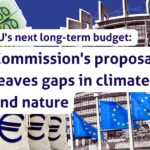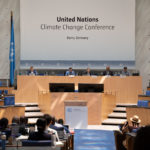CAN Europe and Friends of the Earth Europe commissioned a report that looks at the effect of energy efficiency on bringing down energy prices by 2020 and beyond.
In November 2012 the EU adopted its Directive on Energy Efficiency, which puts forward new measures to help meet the EU’s 20% by 2020 energy savings target. The EU is now working on a post-2020 climate and energy framework, including which goals should be established for energy savings for 2030.
Apart from the environmental benefits – including reducing greenhouse gas emissions – energy savings have significant economic benefits for European economies: (1) they reduce the amount of money businesses and consumers need to spend on energy, (2) they have positive effects on employment and (3) they decrease dependency on fossil fuel imports.
But the actual scale of the benefits is often underestimated. In this paper, we show that energy savings do not only bring direct cost savings; they also indirectly reduce energy prices. In other words, consumers would use fewer units of energy, and the price of the units they do use would be lower than they would otherwise be. Real cost savings resulting from meeting the 20% savings target are therefore likely to be considerably higher than figures commonly cited.
Energy savings can reduce energy prices in the following ways:
1. Decreasing fossil fuel prices: international fossil fuel markets are under pressure because there is little reserve production capacity. This means prices are very sensitive to changes in energy demand. Because energy savings in Europe and the spillover effects of this action in other world regions will reduce demand, we expect significant reductions in future energy prices.
2. Decreasing electricity prices: cheaper fossil fuel prices will reduce electricity prices (because roughly 50% of the EU’s electricity is produced from fossil fuels). In addition, a lower demand will impact the fuel mix in electricity production: it will occur more often that lower-priced fuels determine the marginal costs. This will have an additional reduction effect on electricity prices.
3. Decreasing energy prices in the longer term: tapping the EU’s cost-effective energy savings potential is expected to save tens of billions of Euros per year due to avoided investments in energy infrastructure (power generation and transmission, fuel import and storage facilities). Since it is usual practice to pass on investment costs to energy consumers, a reduction in these investments will lead to an additional cost saving.
Energy savings in 2020
On the basis of the evidence examined in this report, we estimate that the indirect impact on energy prices will be of the same order as the direct impact of the energy savings. Put simply, for every €1 of energy cost saving, an additional €1 could be saved due to lower energy prices. And since net direct savings are expected to amount to €107 billion annually by 2020, this means that the total net savings in 2020 can be estimated at around €200 billion per year.
Energy savings in 2030
If ambitious energy savings would continue to be pursued in the 2020-2030 period, we expect net direct energy cost savings by 2030 to be in the order of €200 billion per year and indirect energy cost savings in the order of €50 billion per year, adding up to total net savings of €250 billion per year for consumers.
Download Saving Energy: Bringing down Europe’s energy prices for 2020 and beyond



